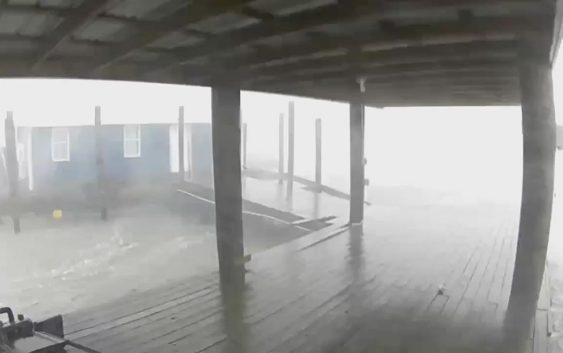- Fake job seekers are flooding the market, thanks to AI
- One set of evacuation orders lifted in Caldwell County after wildfire contained
- 'We gutted every building' | Chimney Rock rebuilding after Hurricane Helene
- 'We gutted every building' | Chimney Rock rebuilding after Hurricane Helene
- Debris from Hurricane Helene provides fuel, complicates containment for spring wildfires
Hurricane Ida: How did it get so strong so quickly?

It seems that stronger storms are becoming the norm, but the recipe was just right for Ida.
NEW ORLEANS — Hurricane season is comprised of a block of time, 6 months worth, from June 1 through November 30 where it is most likely to find conditions just right for tropical development. Within that time there is a peak where activity spikes, around mid-August through the end of September.
This time of year, we’re talking late August through the middle of September is particularly susceptible to tropical development because the overall atmospheric and environmental conditions are just right. The temperature of the ocean water, reduction in winds high up in the sky that halt tropical development, and seeding from clusters of thunderstorms emerging off the African continent all come to their most favorable point at this time.
Sea surface temperatures are a distinct and very necessary ingredient in tropical development. Temperatures of at least 80° are needed to facilitate latent heat release and fuel developing tropical systems. This time of the year you are hard pressed to find sea surface temperatures that aren’t this warm. In fact, the past several years have featured warmer than normal sea surface temperatures adding even more available fuel for storms to take advantage of.
This time of the year also often is conducive to a reduction in winds aloft that we refer to as wind shear. Wind shear is the change in wind direction and speed with height. Tropical systems are vertical heat engines, vertical wind shear effectively cuts the tops off of developing convection and halts development before it even begins.
Late August into September also sees an increase in the number of African Easterly Waves emerging off the African continent. Think of these as seeds getting planted in an extremely fertile field. These seeds are nurtured by warm sea surface temperatures that facilitate convective development and the lack of wind shear allows them to grow and organize.
In regards to Ida specifically there were even more factors in play that helped the storm rapidly intensify and eventually become a major Category 4 hurricane before landfall. The area which Ida first developed, the western Caribbean, is where some of the warmest waters in the entire basin exist, even more so, those waters extend down a great depth. Why this is important is because with tropical systems they mix up the ocean, something called upwelling, this tends to mix up cooler ocean waters from deeper depths. When there is significant ocean heat content the waters being mixed to the surface are not all that much cooler in fact in many cases, equally as warm. This provides endless fuel for a developing system.
As Ida tracked over Cuba it just so happened to move over the portion of the island where topography is not all that disruptive to tropical systems. The Caribbean is known as the tropical storm shredder since there are so many mountainous peaks and areas of enhanced terrain that disrupt storms as they pass overhead. Not in this part of Cuba. This land interaction was seen as the only obstacle to thwart Ida from becoming formidable. Once the storm entered the Gulf of Mexico it was game on. Sea surface temperatures spiked, ocean heat content was deep and wind shear was low. The storm even took advantage of a warm loop current present that was transporting even warmer waters from the Caribbean, further enhancing the available fuel.
Think of a hurricane as an engine. At the surface there is air converging, rushing towards the center of the storm, warming and rising rapidly. That upward motion rises to the top of the storm and disperses out in all directions, what we call divergence. When this process is allowed to play out it efficiently ventilates the storm. The storm is able to effectively remove exhaust and fire all pistons to drive more horse power. In the instance of Ida, an upper level ridge was positioned over the Gulf of Mexico, aiding to ventilate the storm as it began its fast track to rapid intensification. These variables all remained favorable for the storm as it moved towards the Louisiana coastline. The modeling of these variables performed so well that Ida was forecast to become a major hurricane days in advance of the storm actually doing so.
Unfortunately, storms that become so intense so quickly is becoming much more common, in fact, there are several instances just within the past few seasons that we witnessed it occur. The truth is that this will become even more common in the years to come and storms will continue to find their way to vulnerable locations and bring devastating impacts.